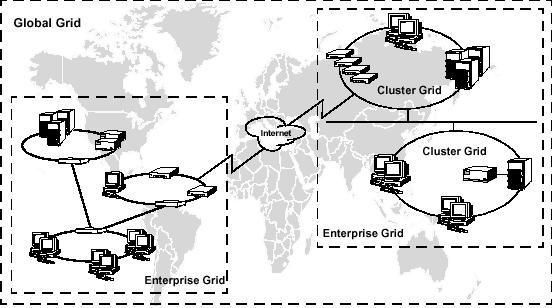Grid computing is the application of several computers to a single problem at the same time – usually to a scientific or technical problem that requires a great number of computer processing cycles or access to large amounts of data. Computational grids that couple geographically distributed resources are becoming the effective computing platform for solving large-scale problems in science, engineering, and commerce. Grid computing can be divided into three logical levels of deployment: Cluster Grids, Enterprise Grids, and Global Grids.
Cluster Grids
The simplest form of a grid, a Cluster Grid consists of multiple systems interconnected through a network. Cluster Grids may contain distributed workstations and servers, as well as centralized resources in a datacenter environment. Typically owned and used by a single project or department, Cluster Grids support both high throughput and high performance jobs. Common examples of the Cluster Grid architecture include compute farms, groups of multi-processor HPC systems, Beowulf clusters, and networks of workstations (NOW).
Enterprise Grids
As capacity needs increase, multiple Cluster Grids can be combined into an Enterprise Grid. Enterprise Grids enable multiple projects or departments to share computing resources in a cooperative way. Enterprise Grids typically contain resources from multiple administrative domains, but are located in the same geographic location.
Global Grids
Global Grids are a collection of Enterprise Grids, all of which have agreed upon global usage policies and protocols, but not necessarily the same implementation. Computing resources may be geographically dispersed, connecting sites around the globe. Designed to support and address the needs of multiple sites and organizations sharing resources, Global Grids provide the power of distributed resources to users anywhere in the world.
Source: Scribd.com
